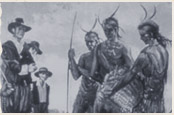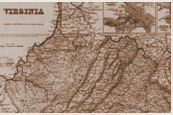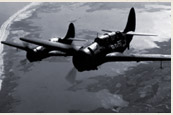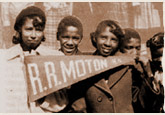Port Royal Island, S.C. African Americans preparing cotton for the gin on Smith's plantation, 1862
Library of Congress
Cumberland Landing, Va. Group of "contrabands" at Foller's house
Library of Congress
District of Columbia Company E, 4th U.S. Colored Infantry, at Fort Lincoln
Library of Congress
Arlington, Va. Band of 107th U.S. Colored Infantry at Fort Corcoran, 1865
Library of Congress
Thirteenth Amendment
Cornell University
Description: These photographs illustrate some of the many different experiences of African Americans during the Civil War Era. One photograph is of slaves preparing cotton in 1862, during the Civil War, while another shows a group of contrabands. Also, there are two photographs of African American Union Army Servicemen. One shows an Army Band and another is of soldiers. These photographs represent the different stages of freedom African Americans experienced during the war. Also included here is a transcript of the 13th Amendment, which outlawed slavery. Cumulatively, these photographs can represent the transition from slavery to freedom.
Teaching Tips:
"Do Now" Suggestions
- Assign students, or groups, individual photographs. Ask them to define what their photograph represents in terms of the African American experience during the Civil War.
- Have students write newspaper captions for each picture from the Northern perspective.
- Create a display or Powerpoint illustrating the different experiences of African Americans during the Civil War Era. Have students analyze the different levels of freedom an African American could be at prior to the 13th Amendment. Create a chronology of the level of participation allowed in the Union Army and how the Emancipation Proclamation further opened opportunities for African Americans.
- Use these photographs as an introduction to African American soldiers in the Civil War. Then, have students research the famous Massachusetts 54th Regiment led by Robert Gould Shaw during a web quest using the National Gallery of Art website (http://www.nga.gov/feature/shaw/s3000.shtm). Assess students by displaying a large image of the memorial and having them interpret the meaning of the image focusing on what Shaw and the troops accomplished and represented.



